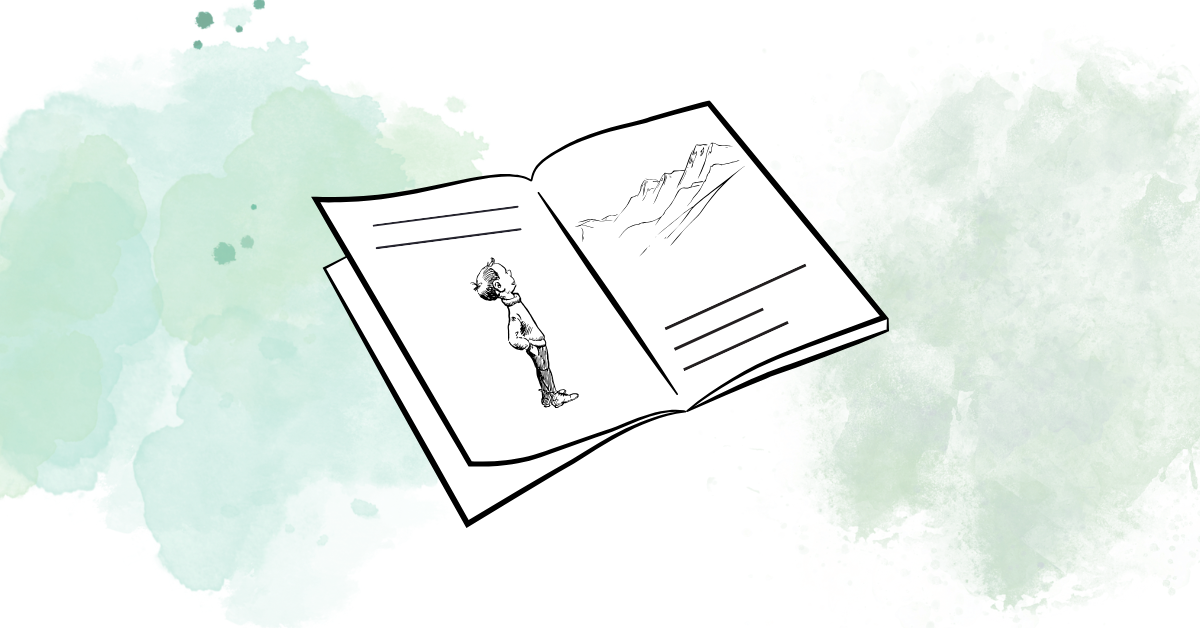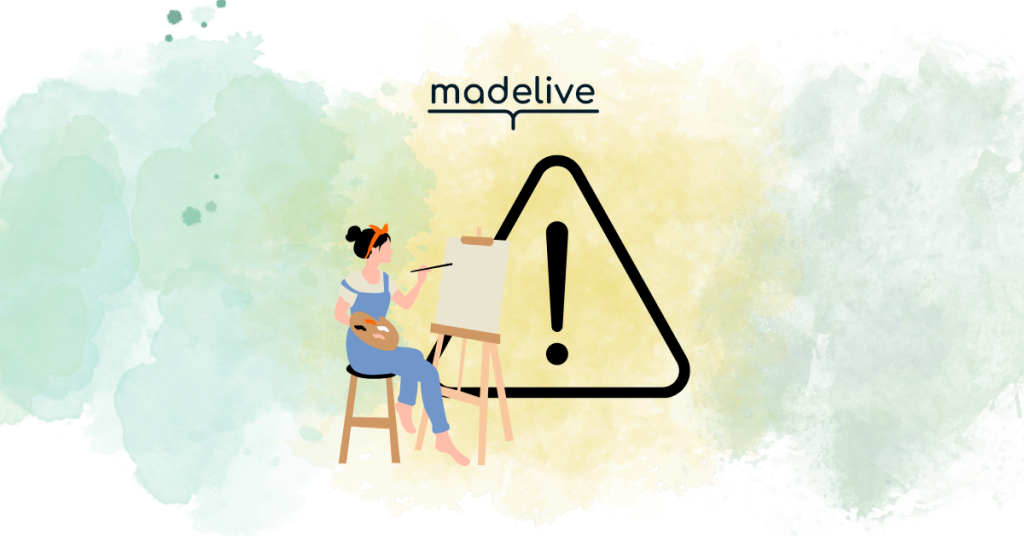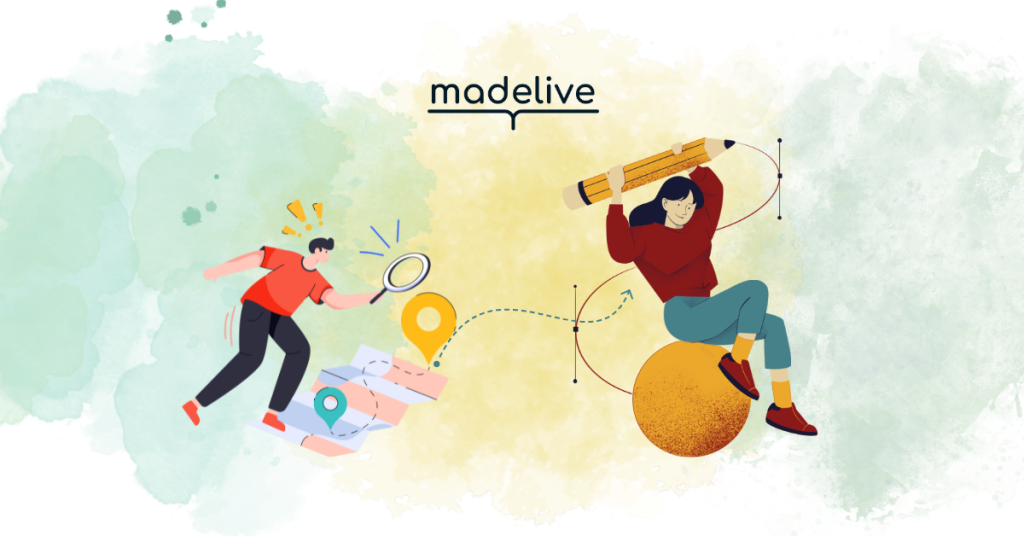Estimated reading time: 11 minutes
Table of contents
- What is a Picture Book Dummy?
- Why Creating a Dummy is Essential
- Materials You’ll Need
- Creating a Physical Picture Book Dummy
- Frequently Asked Questions
- Digital Dummy Alternatives
- Testing and Refining Your Dummy
- Common Dummy Book Mistakes to Avoid
- Next Steps: From Dummy to Final Book
- Ready to Take Your Picture Book to the Next Level?
What is a Picture Book Dummy?
A picture book dummy is a mockup or prototype of your book that helps you see how your story will flow across pages in book form. It’s basically a rough draft of your entire book in physical form, showing the placement of text and illustrations on each spread. Creating a book dummy is an important step while you are still working on your manuscript. It can help you figure out how and where to place illustrations and see how your planned page turns affect your story. You can see how your pacing works, if your page turns create the right impact, and checks that your story fits properly within industry-standard formats. Making a book dummy can help you avoid expensive mistakes when it comes to illustrations.
Why Creating a Dummy is Essential
If you’ve already read our article on picture book layouts and formats, you know that picture books follow specific page count traditions and structural patterns. Creating a dummy brings these concepts to life by:
- Confirming your story fits the format: Ensures your narrative works within the 24-28 content pages available in a standard 32-page book
- Testing page turns: Helps you experience how the physical act of turning pages affects pacing and suspense
- Balancing text and illustrations: Shows where illustrations need to carry the narrative and where text is required
- Identifying structural problems early: Reveals pacing issues, repetitive scenes, or gaps in the story before you invest in final artwork
- Creating a tool for collaboration: Provides a concrete reference when working with illustrators, editors, or publishers
A well-crafted dummy can save you countless hours of revision and potentially thousands of dollars in unnecessary illustration changes. It’s the picture book creator’s equivalent of an architect’s blueprint—essential planning before construction begins.
Materials You’ll Need
Creating a basic physical dummy book requires simple materials you likely already have:
- 8 sheets of letter-sized or A4 paper (for a 32-page book)
- Pencil and eraser
- Stapler
- Scissors (optional)
- Ruler (optional)
- Sticky notes (optional but helpful)
For a more advanced dummy:
- Tracing paper
- Colored pencils or markers
- Tape or glue
- Cardstock for cover

Creating a Physical Picture Book Dummy
Follow these steps to create your own picture book dummy:
Step 1: Prepare Your Paper
- Take 8 sheets of letter-sized or A4 paper.
- Fold all sheets in half widthwise to create a booklet with 32 pages.
- Stack the folded sheets together with all folds aligned.
- Staple along the center fold to secure your pages together. Or, if your stapler is too small, you can sew along the fold.
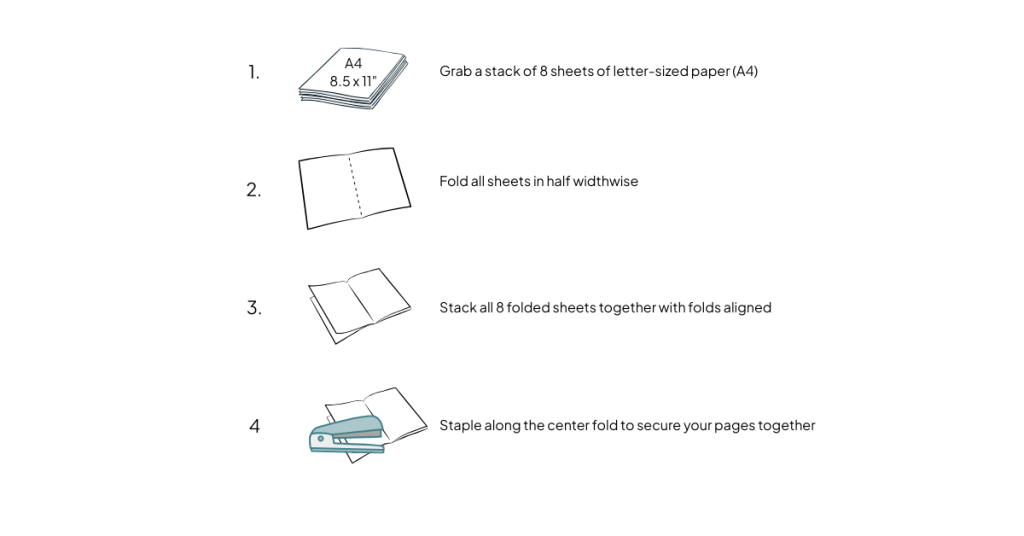
Step 2: Number Your Pages
- Keeping your dummy closed like a book, number each page sequentially from 1 to 32.
- Remember that pages 1 and 2 are typically reserved for title and copyright information.
- Note that in most picture books, page 3 is where your story begins.
This numbering helps you track where each part of your story will fall and ensures you’re planning correctly for industry-standard page allocations.
Step 3: Mark Special Pages
Before adding your story content, mark the pages that serve specific functions:
- Page 1: Write “Title Page”
- Page 2: Write “Copyright/Dedication”
- Final pages (30-32): Mark for back matter or story conclusion
If you’re creating a dummy for a print-on-demand book, also mark page 32 as “Barcode Page” to remind yourself that this page has special requirements.
Step 4: Plan Your Story Arc
Based on standard picture book structure, mark where key story elements will fall. For example:
- Pages 3-9: Setup and exposition
- Pages 10-13: Problem introduction
- Pages 14-21: Attempts and failures
- Pages 22-25: Climax
- Pages 26-29: Resolution
- Pages 30-32: Conclusion/wind down (if not used for back matter)
You might find it helpful to use colored highlighters or sticky notes to mark these sections, creating a visual map of your story arc, like we’ve done in our picture book layout templates.
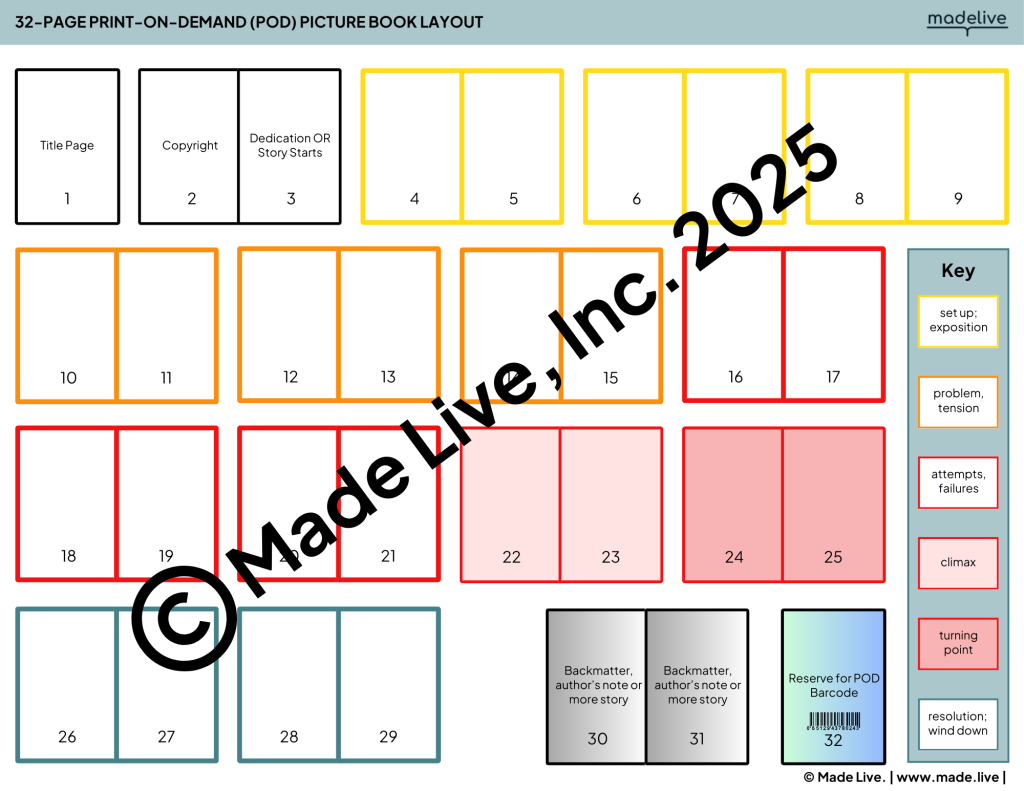
Step 5: Rough in Text and Sketches
Now you’re ready to add content to your dummy:
- For each page or spread, write abbreviated versions of your text (key phrases rather than complete sentences).
- Sketch very rough thumbnails to indicate illustration concepts—stick figures and basic shapes are perfectly fine!
- Consider where text will appear on each page in relation to illustrations.
- Pay special attention to right-hand pages, which readers see first when turning pages.
Don’t worry about artistic quality—this is about layout and pacing, not finished artwork.
Step 6: Test Page Turns
Now that your dummy has content, it’s time to test how it reads:
- Read through your dummy as if you were reading the actual book, physically turning each page.
- Pay attention to moments of revelation or surprise—do they land after page turns?
- Check if the pacing feels right—does the story move too quickly or drag in places?
- Verify that your climax falls in the right location (around pages 22-25).
- Ensure your story reaches a satisfying conclusion within the available pages.
Mark any spots that need adjustment with sticky notes or directly on the pages.
Frequently Asked Questions
A picture book dummy is a rough prototype or mockup of your book that shows how your story will flow across pages. It typically consists of folded paper sheets with rough sketches and abbreviated text to represent your complete book. You need a dummy because it helps you visualize page turns, test if your story fits the standard format, identify pacing issues, and ensure your narrative structure works before investing in final illustrations. Professional authors and illustrators consider dummy books an essential step in the picture book creation process, as they can reveal structural problems that might be costly to fix later.
Your picture book dummy should have 32 pages if you’re creating a standard picture book, or 40 pages if you’re planning a longer format. These numbers reflect industry-standard formats based on printing signatures. Within a 32-page dummy, remember that approximately 24-28 pages will be available for your actual story content, with the remaining pages dedicated to title page, copyright information, and possibly back matter. Count all pages individually (not by spreads), and be sure to number them sequentially from 1 to 32 or 1 to 40.
Yes, you can create a digital picture book dummy using software like PowerPoint, Keynote, Canva, or specialized tools like Made Live. Digital dummies offer advantages like easy editing, the ability to share with collaborators remotely, and simple duplication for different versions. However, physical dummies provide a tactile experience that better simulates the actual reading experience with physical page turns. Many professionals create both—starting with a physical dummy for initial planning and then transferring to a digital version for refinement and sharing. Whichever method you choose, ensure you maintain proper page numbering and format standards.
The sketches in your picture book dummy should be simple and rough—stick figures, basic shapes, and minimal details are perfectly adequate. The purpose of dummy book sketches is to show composition, page flow, and the relationship between text and images, not to create finished artwork. Focus on layout elements like where characters will be positioned, the general scene setting, and how illustrations will interact with text. You should be able to complete sketches for an entire dummy in a few hours. If you find yourself spending too much time on detailed drawings, you’re likely overcomplicating this planning stage. Remember, even professional illustrators use very rough sketches at the dummy stage.
Digital Dummy Alternatives
While physical dummies provide the most authentic page-turning experience, digital tools offer convenience and flexibility:
PowerPoint, Keynote, or Google Slides
- Create a new presentation with slide dimensions matching your book’s trim size.
- Set up 32 slides (one for each page).
- Add text boxes and simple shapes or image placeholders.
- Use the slide sorter view to see your entire book at once.
Dedicated Apps and Software
Several digital tools are specifically designed for book creation:
- Made Live Platform: Our specialized software was built for this! The easy to use click-drag-drop editor lets you create or choose placeholder images and move images and text blocks to find your ideal layout. The platform automatically handles technical specifications (bleeds, margins, etc.) based on your chosen publishing path to help you avoid costly mistakes.
- Adobe InDesign: Professional tool with templates available (higher learning curve and cost).
The Hybrid Approach
Many creators find that a combination works best:
- Start with a simple paper dummy for initial planning and physical page turn testing.
- Transfer to a digital format for refinement and sharing with collaborators.
- Print the digital version for a final physical review before proceeding to finished illustrations.
This approach combines the tactile benefits of physical dummies with the flexibility of digital tools.
Testing and Refining Your Dummy
Once you’ve created your initial dummy, it’s time to test and refine:
Self-Review Process
- Set your dummy aside for at least a day before reviewing.
- Read through it aloud, timing yourself (most picture books take 3-5 minutes to read).
- Note where you stumble or where the pacing feels off.
- Check that each page or spread has a clear purpose in moving the story forward.
Getting Feedback
The most valuable insights often come from others:
- Target audience testing: If possible, read your dummy to children in your target age range.
- Peer reviews: Share with other picture book creators or join critique groups.
- Industry feedback: If you have access to editors, agents, or published authors, their input is invaluable.
When collecting feedback, ask specific questions:
- “Where did your interest lag?”
- “Was the ending satisfying?”
- “Did any part feel rushed or too slow?”
- “Were you surprised at the right moments?”
Making Revisions
Based on testing and feedback:
- Create a new dummy incorporating changes rather than trying to fix the original.
- Test multiple versions if you’re considering different approaches.
- Focus primarily on structural issues before worrying about precise wording.
- Ensure your page count remains consistent with industry standards.
Remember that dummy creation is iterative—professional picture book creators often go through 5-10 versions before finalizing their structure.
Common Dummy Book Mistakes to Avoid
Watch out for these frequent pitfalls:
Overcrowding Pages
Problem: Trying to fit too much text or too many scene changes on a single page or spread.
Solution: Be ruthless about cutting text. Remember that illustrations will carry much of the storytelling, and picture books typically have under 500 words total.
Ignoring Page Turns
Problem: Not considering how page turns affect the reading experience and reveal information.
Solution: Place your most surprising or important moments after page turns. Think cinematically about the reveal.
Misaligning Story Structure
Problem: Having your climax too early or too late in the book.
Solution: Check that your story structure aligns with standard page allocations—climax around pages 22-25, with resolution following.
Neglecting Visual Variety
Problem: Creating too many similar compositions across pages.
Solution: Vary your rough layouts with a mix of full-bleed illustrations, spot illustrations, close-ups, and wide shots.
Forgetting About the Gutter
Problem: Planning critical visual elements to cross the center binding (gutter) where they might be lost.
Solution: Mark the center fold clearly and avoid placing important details there.
Next Steps: From Dummy to Final Book
Once you’ve refined your dummy and are confident in your book’s structure, you’re ready to move forward:
Author-Illustrators
- Create more detailed sketches based on your dummy.
- Develop a consistent character design and style.
- Produce final artwork page by page, referring to your dummy for composition.
- Finalize text and consider font selection.
Authors Working with Illustrators
- Polish your manuscript based on dummy insights.
- Create an art brief that includes your dummy findings.
- Discuss key moments and page turns with your illustrator.
- Be open to their input on visual storytelling improvements.
All Creators
Remember that your dummy is a tool for planning, not a restriction. As you develop your final book, remain flexible—sometimes the best ideas emerge during later stages of creation. The goal of the dummy is to establish a solid foundation, not to lock you into one approach.
Ready to Take Your Picture Book to the Next Level?
Creating an effective dummy is just one step in the picture book creation journey. To support you through the entire process, Made Live offers:
Made Live Self-Publishing Software Platform
Our specialized software was designed specifically for picture book creators, with built-in templates for every publishing path. Unlike general design tools, Made Live automatically manages correct page counts, proper front/back matter placement, and industry-standard story structure mapping. Learn more
Self-Publishing Club
Join our supportive community of creators for 12 weeks of group training masterclasses and feedback on your layouts from industry professionals. Tuition includes a 12 month subscription to Made Live Self-Publishing Software. Perfect for authors who want ongoing support and education. Learn more
Join the Self-Publishing Club Waitlist
One-on-One Author Coaching
Get personalized guidance on your specific project, with expert feedback on your dummy book and suggestions for improvement from published picture book creators. Learn more
Book Your Free 15-Minute Consultation
Did this guide help you create your picture book dummy? Share your experience in the comments!
